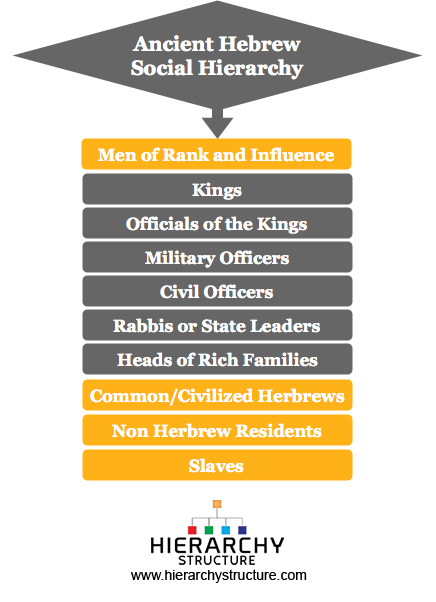Ancient Hebrews were the early Hebrews who descended from one of Noah’s son called Shem. Just like later Hebrews or Jews, even the ancient Hebrews followed a systematic approach to the social structure or distinction.
The ancient Hebrews were divided according to class and each class enjoyed different benefits and respect levels. Ancient Hebrews were strict about this structure which can also be termed as ancient Hebrew social hierarchy. To know more about this hierarchy structure, you can read the following given information.
Men of Rank and Influence
At the top of the hierarchical pyramid of the ancient Hebrews were the men of rank and influence. These men held the maximum respect and influence and were powerful men beneath whom all the other ranks came. This class mostly comprised of:
- Kings
- Officials of the kings
- Military officers
- Civil officers
- Rabbis or state leaders
- Heads of rich families
Common/Civilized Hebrews
The next rank was of the common or civilized Hebrews. This class comprised of the free citizens who held the basic citizen rights of the land or society. Their rights included food, water, free land, shelter and some level of authority. These individuals took up normal jobs and worked to save for their future and for their future generations. They were not as mighty and powerful as the men of rank but were respected and had a lot of responsibility towards the betterment of the society.
Non Hebrew Residents
On the social hierarchy chart of the ancient Hebrews, next came the non-Hebrew residents. These men were generally the freemen who didn’t enjoy the same civil rights and responsibilities as the common Hebrews since they were outsiders not born on the same land. They were not regarded as citizens and were sometimes not welcomed as the other people.
Slaves
At the bottom of the pyramid were the slaves who enjoyed no responsibilities, no rights and no control over their own life. They were bought or kept by common Hebrews or men of rank and were often required to do whatever they were asked without any pay or fee for the same. Sometimes, slaves were set free after they had completed 7 years of slavery. Slaves were giventhis status mostly by birth but sometimes if a person had committed a crime, he could be made a slave as a punishment. Also, if someone was unable to pay debt, he could be made a slave.
Know more about Ancient Athens Social Hierarchy.

